Trends in financial intermediation
Information agency Credinform represents a review of activity trends among the largest companies engaged in provision of the auxiliary financial services.
The companies with the highest annual revenue (TOP 1000) engaged in financial intermediation - trading on stock, commodity, currency, currency and stock exchanges, brokerage, fund management, etc. - were selected for the ranking, according to the data from the Statistical Register and the Federal Tax Service for the latest available periods (2011 – 2020). The selection and analysis of companies were based on the data of the Information and Analytical system Globas.
Net assets are total assets less total liabilities. This indicator reflects the real value of the property of an enterprise. When the company’s debt exceeds the value of its property, the indicator is considered negative (insufficiency of property).
The largest company in term of net assets is ASSOCIATION OF FINANCIAL MARKET PARTICIPANTS NON-PROFIT PARTNERSHIP OF FINANCIAL MARKET DEVELOPMENT RTS, INN 7712095220, Moscow, activities to ensure the efficiency of the functioning of financial markets. In 2020, net assets value of the company exceeded 16 billion RUB.
The lowest net assets value among TOP 1000 belonged to LLC RVVT-FINANS, INN 7703662787, Moscow, activities auxiliary to financial services, excluding insurance and retirement benefits; the legal entity is in liquidation since 25.08.2016. In 2020, insufficiency of property of the enterprise was indicated in negative value of -7 billion RUB.
Covering the ten-year period, the average net assets values of TOP 100 have a trend to increase (Picture 1).
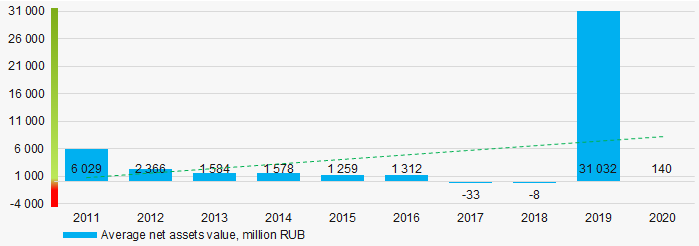 Picture 1. Change in industry average net assets value in 2011 – 2020
Picture 1. Change in industry average net assets value in 2011 – 2020Over the past five years, the share of companies with insufficient property had no trend to decrease (Picture 2).
 Picture 2. Shares of TOP 1000 companies with negative net assets value in 2016-2020
Picture 2. Shares of TOP 1000 companies with negative net assets value in 2016-2020Sales revenue
In 2020, the revenue volume of ten largest companies exceeded 53% of total TOP 1000 revenue (Picture 3). This is indicative of a high level of monopolization in the industry.
 Picture 3. The share of TOP 10 companies in total 2020 revenue of TOP 1000
Picture 3. The share of TOP 10 companies in total 2020 revenue of TOP 1000 In general, there is a trend to decrease in revenue and its growth rate (Picture 4).
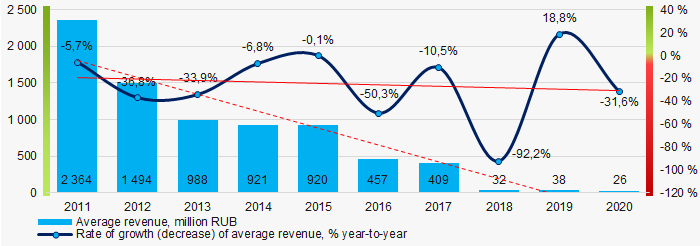 Picture 4. Change in industry average values of revenue in 2011 – 2020
Picture 4. Change in industry average values of revenue in 2011 – 2020Profit and loss
In 2020, the largest organization in term of net profit is JSC RUSAGRO GROUP, INN 5003077160, Tambov region, securities management. The company’s profit was near 12 billion RUB.
Covering the ten-year period, there is a trend to decrease in average net profit (Picture 5).
 Picture 5. Change in industry average net profit (loss) values in 2011 – 2020
Picture 5. Change in industry average net profit (loss) values in 2011 – 2020For the five-year period, the average net profit values of TOP 1000 have the increasing trend with the increasing net loss (Picture 6).
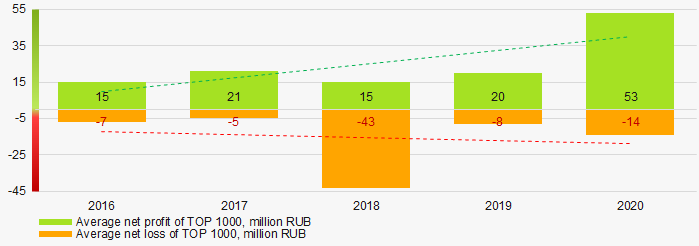 Picture 6. Change in average net profit and net loss of ТОP in 2016 - 2020
Picture 6. Change in average net profit and net loss of ТОP in 2016 - 2020Key financial ratios
Covering the ten-year period, the average values of the current liquidity ratio were mainly within the recommended one - from 1,0 to 2,0 with a trend to decrease (Picture 7).
Current liquidity ratio (current assets to short-term liabilities) shows the sufficiency of company’s assets to repay on short-term liabilities.
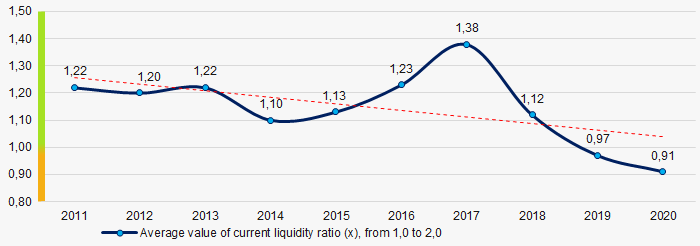 Picture 7. Change in industry average values of current liquidity ratio in 2011 – 2020
Picture 7. Change in industry average values of current liquidity ratio in 2011 – 2020 Covering the ten-year period, the average values of ROI ratio had a trend to increase basically due to the results achieved in 2017-2018 (Picture 8).
ROI ratio is calculated as net profit to sum of shareholders equity and long-term liabilities, and shows the return of equity involved in commercial activities and long-term borrowed funds.
 Picture 8. Change in industry average values of ROI ratio in 2011 - 2020
Picture 8. Change in industry average values of ROI ratio in 2011 - 2020Assets turnover ratio is the ratio of sales revenue and company’s average total assets for a period. It characterizes the effectiveness of using of all available resources, regardless the source of their attraction. The ratio shows how many times per year the full cycle of production and circulation is performed, generating the corresponding effect in the form of profit.
Covering the ten-year period, business activity ratio demonstrated the decreasing trend (Picture 9).
 Picture 9. Change in average values of assets turnover ratio in 2011 – 2020
Picture 9. Change in average values of assets turnover ratio in 2011 – 2020Small business
88% of companies included in TOP 1000 are registered in the Register of small and medium-sized enterprises of the Federal Tax Service of the Russian Federation. In 2020, their share in total revenue of TOP 1000 is more than 35%, much higher than the average country values in 2018-2019 (Picture 10).
 Picture 10. Shares of small and medium-sized enterprises in TOP 1000
Picture 10. Shares of small and medium-sized enterprises in TOP 1000Main regions of activity
Companies of TOP 1000 are registered in 77 regions of Russia, and unequally located across the country. Over 65% of companies largest by total 2020 revenue are located in Moscow and Moscow region (Picture 11).
 Picture 11. Distribution of TOP 1000 revenue by regions of Russia
Picture 11. Distribution of TOP 1000 revenue by regions of RussiaFinancial position score
Assessment of the financial position of TOP 1000 companies shows that the majority of them have average financial position (Picture 12).
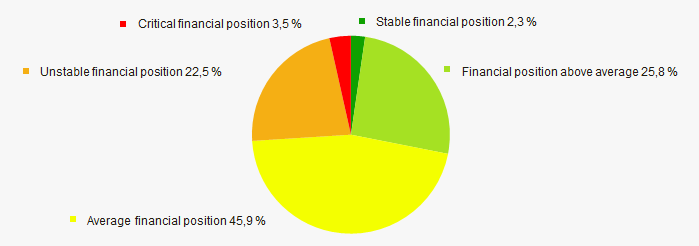 Picture 12. Distribution of TOP 1000 companies by financial position score
Picture 12. Distribution of TOP 1000 companies by financial position scoreSolvency index Globas
Most of TOP 1000 companies got Adequate / Weak indexes Globas. This fact shows their limited ability to meet their obligations fully (Picture 13).
 Picture 13. Distribution of TOP 1000 companies by solvency index Globas
Picture 13. Distribution of TOP 1000 companies by solvency index GlobasConclusion
Complex assessment of activity of companies engaged in activities auxiliary to financial services, taking into account the main indexes, financial ratios and indicators, demonstrates the prevalence of negative trends in 2011 - 2020 (Table 1).
| Trends and evaluation factors | Relative share of factors, % |
| Dynamics of the average net assets value |  5 5 |
| Rate of growth (decrease) in the share of companies with negative net assets |  5 5 |
| Level of competition / monopolization |  -10 -10 |
| Dynamics of the average revenue |  -10 -10 |
| Rate of growth (decrease) in the average size of revenue |  -10 -10 |
| Dynamics of the average profit (loss) |  -10 -10 |
| Growth / decline in average values of companies’ net profit |  10 10 |
| Growth / decline in average values of companies’ net loss |  -10 -10 |
| Increase / decrease in average values of total liquidity ratio |  -5 -5 |
| Increase / decrease in average values of return on investment ratio |  5 5 |
| Increase / decrease in average values of asset turnover ratio, times |  -10 -10 |
| Share of small and medium-sized businesses in terms of revenue being more than 20% |  10 10 |
| Regional concentration |  -10 -10 |
| Financial position (the largest share) |  5 5 |
| Solvency index Globas (the largest share) |  5 5 |
| Average value of relative share of factors |  -2,0 -2,0 |
 positive trend (factor),
positive trend (factor),  negative trend (factor)
negative trend (factor)
7 important facts about Russian companies
According to the Information and Analytical system Globas, there are 3,1 million operating legal entities in Russia as of August 1, 2021.
We bring to your attention a few of the most important facts that will help you compose an overview of Russian companies.
1. General structure
The majority of the operating legal entities counts for commercial organizations - 2.5 million or 81%. The most common legal form is a limited liability company. The number of registered LLC is 2.4 million. Joint stock companies are a less spread legal form. 48.7 thousand joint-stock companies are registered in Russia, including 41.6 thousand non-public and 6.5 thousand public joint-stock companies. In 2019, there were 67 thousand joint-stock companies in the Russian Federation, since this year the number of joint-stock companies has been constantly decreasing.
The shareholders of operating companies with a controlling stake in the authorized capital of 50% or more are mainly Russian citizens. There are 2,1 million such kind of companies. Citizens of other countries with a share in the capital of more than 50% have established 50 thousand organizations.
2. Region of registration
Moscow remains the leader in terms of the number of registered legal entities. As of August 1, 2021, over 520 thousand legal entities were registered in the capital of our country, St. Petersburg is in the second place with 208 thousand registered companies, Moscow region closes the top with 178 thousand companies. The share of the three regions of the total number of operating companies exceeds 29%.
3. Activity types
Most of the companies are engaged in wholesale and real estate transactions. These sectors are the most popular in Moscow, St. Petersburg and Moscow region (Picture1). The largest number of construction and development companies is registered in St. Petersburg and Moscow too.
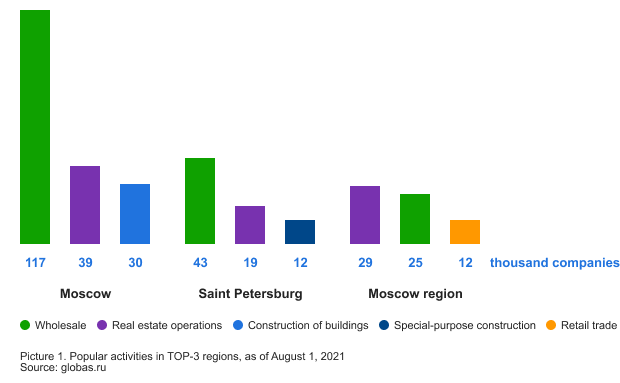
4. Companies’ duration
The significant part of operating companies have passed the formation period: 67% of organizations were founded more than 5 years ago (Picture 2). The share of newly established companies from 1 to 3 years is 13%. In 2020, a large number of new companies could not survive the decline in the level of business activity: 110 thousand legal entities with duration from 1 to 3 years ceased their activities.

5. Business categories
2.1 million operating companies refer to small and medium-sized businesses, and 1,9 million companies are micro-enterprises.
6. Result of activity
Most of the companies in Russia show positive financial result: in 2020, the share of profitable companies was 75%. The share of unprofitable ones is 25%.
7. Globas index
According to Globas, 30% of operating companies have Superior / High and Strong / Medium solvency index, 47% have Adequate / Weak solvency index, and 11% have Unsatisfactory / Poor solvency index.
7 conclusions from 7 facts
|